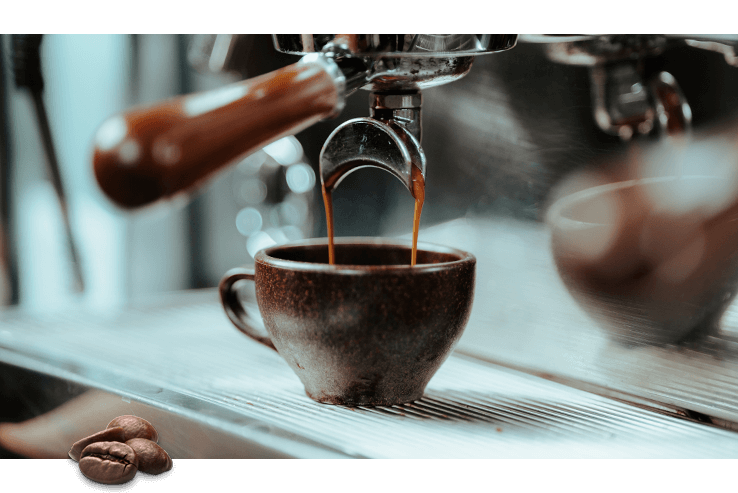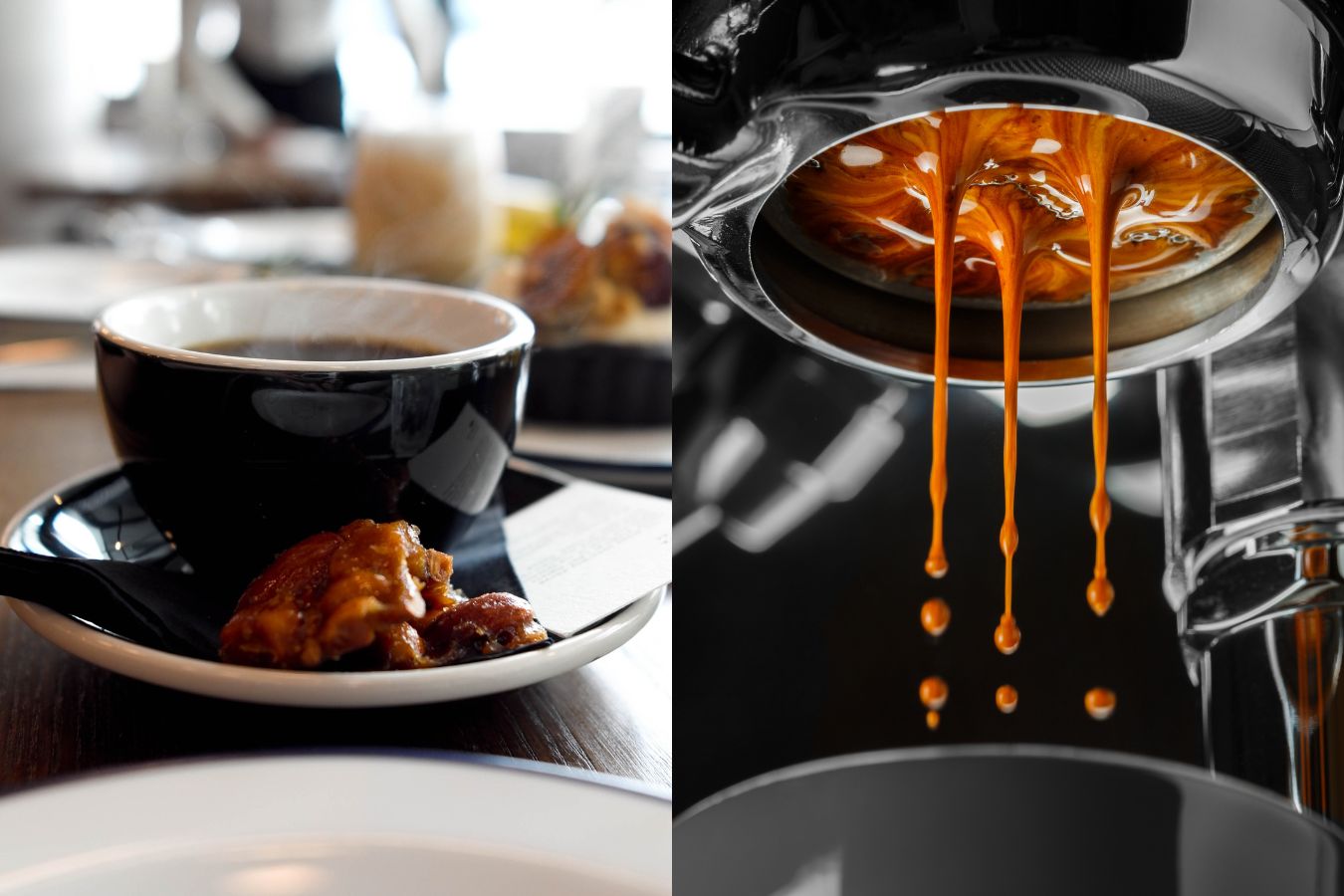SOE Single Origin Espresso – Highlighting Flavors from One Region
SOE Single Origin Espresso – Highlighting Flavors from One Region
Blog Article
Understanding Coffee Beans: the Trip From Coffee to Blended Coffee Beans

The Origins of Coffee: An International Viewpoint
While you could think about coffee as a modern staple, its origins map back centuries, intertwining with cultures around the world. The tale starts in Ethiopia, where legend states a goat herdsman called Kaldi uncovered the stimulating effects of coffee beans after discovering his goats frolicking energetically after consuming them. This stimulated passion, leading to coffee's spread to Arab traders who cherished the made beverage. By the 15th century, it reached Persia, Egypt, and Turkey, where coffeehouses ended up being social centers for discussion and culture.
As trade paths broadened, coffee made its means to Europe in the 17th century, rapidly getting appeal. It transformed from a magical drink right into a day-to-day routine, motivating events and intellectual exchanges. Each culture included its unique spin to coffee prep work, improving its history. This international trip highlights just how coffee attaches us, going beyond boundaries and unifying diverse traditions with a straightforward bean.
Growing and Harvesting of Espresso Beans
As coffee's journey advanced, the focus moved to the cultivation and harvesting of certain bean ranges, specifically those utilized for coffee. You'll find that espresso beans typically come from Arabica or Robusta plants, each offering distinct flavors. The ideal growing problems consist of high altitudes and abundant, well-drained dirt, which enhance the beans' high quality.
Throughout the harvest, picking techniques differ. Timing is vital; you desire to collect when the cherries reach peak ripeness for optimum taste.
Once harvested, the beans are planned for processing, which is crucial in determining their last preference. Recognizing the cultivation and collecting procedures provides you insight into what goes into your favored coffee, enriching your admiration for each mug.
Handling Methods: From Cherry to Bean
Currently that you've found out about collecting espresso beans, let's explore how those cherries transform right into the coffee beans you love. You'll see exactly how different harvesting techniques effect taste, adhered to by the necessary actions of fermentation and drying out. Finally, we'll damage down the milling and grading procedure that establishes your coffee's quality.
Collecting Methods Discussed
When it pertains to coffee, understanding harvesting techniques is important, considering that they straight influence the flavor and top quality of the beans you appreciate. There are two primary approaches: discerning picking and strip selecting. Selective picking includes hand-picking only ripe cherries, ensuring you obtain the most effective high quality beans. This approach commonly results in a richer flavor profile, though it's more labor-intensive. On the other hand, strip picking ways gathering all cherries at once, no matter ripeness. While it's quicker and cheaper, this can cause a mix of tastes, impacting the final product. Ultimately, the option of gathering method can significantly affect your coffee experience, so it's worth knowing how those beans made it to your cup.
Fermentation and Drying Out
After gathering, the next action in handling coffee beans play a considerable function in forming their taste. You'll locate that fermentation is essential, as it aids break down the mucilage surrounding the beans, enhancing their preference profile. Depending upon the technique, this process can last from a couple of hours to numerous days, with varying results based upon temperature level and moisture.
Once fermentation is complete, drying out adheres to, which is equally important. You can select from sun-drying or mechanical drying out techniques. Sun-drying enables the beans to soak up tastes from the atmosphere, while mechanical drying out assurances constant moisture degrees no matter of weather condition. Appropriate drying is vital to prevent mold and mildew and preserve the beans' quality, inevitably affecting your cup of coffee.
Milling and Grading Process
As fermentation and drying out established the stage for taste growth, the milling and grading process guarantees that just the most effective coffee beans make it to your mug. This stage involves getting rid of the outer layers of the coffee cherry, including the parchment and husk. After milling, the beans are sorted by dimension and weight, making sure a consistent top quality. You'll discover that grading helps determine problems and classify beans, which influences taste and aroma. High-grade beans obtain a higher grade, leading to a richer coffee experience. Once graded, the beans await packaging and delivery, preserving their one-of-a-kind attributes. This careful process is crucial for providing the phenomenal preference you enjoy in every sip of your favorite mixture.
Toasting Strategies: Opening Flavor Prospective
When you roast coffee beans, the technique you pick can drastically affect the taste profile. Recognizing the connection in between time, temperature level, and roasting strategies is key to exposing the potential of your brew. Let's explore just how these components integrated to develop the best cup.
Toasting Approaches Discussed
While you might assume that all coffee roasting approaches produce the very same results, the reality is that each method reveals one-of-a-kind taste possibilities in the beans. Drum roasting uses a rotating drum to uniformly distribute warmth, enhancing caramelization and creating a well balanced taste. Air roasting, on the various other hand, distributes hot air around the beans, advertising a lighter roast with pronounced acidity.

Influence On Taste Account
Different toasting approaches not only influence the procedure but additionally significantly affect the flavor account of the coffee beans. When you choose a light roast, you'll experience intense level of acidity and flower notes, showcasing the bean's beginning. In comparison, a medium roast equilibriums acidity with sweetness, commonly exposing chocolatey touches. Dark roasts, on the other hand, highlight strong, smoky flavors, in some cases concealing the bean's one-of-a-kind characteristics. Each strategy exposes different oils and substances, bring about a wide variety of flavors. By experimenting with different toasting styles, you can find which accounts reverberate with your taste buds. Recognizing these subtleties Going Here helps you appreciate the artistry behind your mug of coffee, improving your total experience with every sip.
Time and Temperature Elements
To launch the complete taste potential of coffee her latest blog beans, both time and temperature level throughout the toasting process play significant roles. When toasting, you'll locate that greater temperature levels can swiftly establish tastes, but if you hurry it, you may finish up with charred notes. Alternatively, reduced temperature levels permit an extra progressive taste development, showcasing the beans' unique qualities.

Timing is equally as essential; expanding the roast also long can bring about a loss of level of acidity and brightness, while as well short a roast could leave the beans underdeveloped. Finding that wonderful spot requires technique and experimentation. By adjusting these aspects, you can reveal the abundant, intricate flavors hidden within each bean, producing a truly remarkable coffee experience.
The Art of Blending: Crafting Special Coffee Accounts

Start by selecting a base coffee that gives a strong structure. A brilliant Ethiopian bean can bring fruitiness, while an abundant Brazilian coffee includes body.
As you blend, bear in mind that each combination narrates. You're not just making coffee; you're producing an experience. Take your time, taste frequently, and enjoy the trip of uncovering your trademark blend - Single Origin Espresso.
Brewing Approaches: How Prep Work Influences Taste
Blending coffee opens up a domain of taste opportunities, yet how you make that blend can significantly affect your last mug. On the various other hand, a pour-over highlights the coffee's clarity and brightness, excellent for showcasing fragile notes.
Coffee, with its high pressure, creates a concentrated shot that highlights sweetness and crema. If you prefer a lighter mixture, think about a cool brew approach; it yields a smooth, less acidic taste.
Eventually, experimentation is essential. Readjusting variables like water temperature, grind dimension, and brew time can transform your coffee's profile. So, embrace the art of brewing to uncover the flavors concealed in your coffee blends. The right method can boost your experience to new elevations.
The Future of Coffee: Sustainability and Innovation
As the coffee sector progresses, sustainability and innovation are coming to be crucial for addressing environmental difficulties and conference consumer demands. You'll see that more coffee business are taking on environment-friendly techniques, from sourcing beans morally to implementing sustainable farming techniques. These shifts not just aid the earth however additionally enhance the top quality of the coffee you enjoy.
You could see developments like naturally degradable product packaging and water-saving developing approaches that lower waste. Advanced innovation, such as blockchain, is likewise ending up being prominent, making sure transparency in the supply chain, which enables you to map your coffee back to its beginnings.
In addition, purchasing neighborhood areas and supporting farmers through fair profession initiatives promotes a more lasting coffee environment. As you sip your following cup, bear in mind that your selections can add to a brighter future for coffee. By selecting sustainable brand names, you're not just appreciating a drink; you're making a favorable effect on the world.
Regularly Asked Concerns
What Is the Difference In Between Arabica and Robusta Beans?
Arabica beans are smoother, sweeter, and have a higher level of acidity, while robusta beans are stronger, much more bitter, and contain even more high levels of caffeine. You'll notice these distinctions in taste and fragrance when brewing your coffee.
How Does Altitude Affect Coffee Bean Taste?
Elevation influences coffee bean flavor considerably. Greater elevations create beans with brighter acidity and complex tastes, while reduced altitudes frequently produce beans that are heavier and less nuanced. You'll notice these distinctions in your cup!
What Are the Health And Wellness Perks of Drinking Coffee?
Consuming alcohol coffee can improve your power, enhance mental emphasis, and even enhance physical efficiency. It's rich in antioxidants, may lower the threat of certain illness, and can advertise a healthier click now metabolism when consumed in moderation.
Can Coffee Beans Be Recycled for Brewing?
Yes, you can reuse coffee beans for brewing, but the flavor may be weak. If you appreciate trying out, try reusing them in different methods, like chilly brews or including in smoothies for an extra kick.
Just how Should I Shop Coffee Beans for Freshness?
To maintain your coffee beans fresh, store them in an impermeable container in a trendy, dark area. Stay clear of subjecting them to wetness, light, or heat, as these variables can promptly deteriorate their flavor and fragrance.
Understanding Coffee Beans: the Trip From Coffee to Blended Coffee Beans.
Currently that you've found out regarding collecting espresso beans, let's explore just how those cherries change right into the coffee beans you love.When you roast coffee beans, the method you choose can drastically influence the flavor account - Single Origin Espresso.While you might think that all coffee toasting approaches generate the very same outcomes, the truth is that each technique reveals unique taste potentials in the beans.Various toasting techniques not just influence the process but likewise substantially impact the taste profile of the coffee beans
Report this page